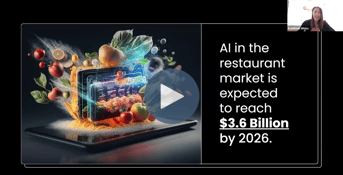This summer, Michigan’s Supreme Court voted to make changes coming to the state's tip credit laws. The new laws aim to increase the minimum wage and phase out the way tips can be taxed, which will have a sweeping effect on the hospitality industry across Michigan.
Michigan is not the only place where making these changes is being considered, however. Tip credits have already been eliminated statewide in California, Minnesota, Nevada, Washington, Oregon, Montana and Alaska, and Chicago’s new minimum wage of $16.20 will also phase out the tip credit within five years’ time. Seattle, Baltimore, Arizona, and Denver are also in varying stages of exploring or implementing elimination of the tip credit.
And although there’s no federal law in place on this topic, both presidential candidates have both been talking about it on the campaign trail, vowing their administrations wouldn’t make tipped wages taxable.
Using Technology to Combat The Rising Cost of Labor
More than just a passing fad, it’s clear that changes to wages and tax laws within the hospitality industry will continue to change–for better or for worse–in the future. Many restaurateurs are anxious about how changes to these laws could impact their bottom line, but there might be a silver lining to consider: these changes might push many in the hospitality industry to embrace more technology to streamline their operations and save money.
Technology for restaurants has improved dramatically over the years, and many platforms on the market today were created by restaurant people who knew there had to be a better, more efficient way to address recurring issues in the industry.
Tapping Into Tech to Improve Efficiency
“As changes in minimum wage and tip credit laws continue to sweep across the country, restaurants must adapt quickly to stay profitable,” said Back of House expert Miroslava Kotsan. “Leveraging technology to streamline operations, manage labor costs, and optimize revenue can be a game-changer in navigating these complex regulatory shifts.”
If the minimum wage increases, ensuring that employees are making the most of their time while on the clock will be of the utmost importance. How can technology enable this for your restaurant business?
One way is with table-side ordering. Many POS systems provide you with the ability to have customers interface directly with the kitchen via their mobile device, which allows your wait staff to just bring the dishes out as they are ready. Thattu in Chicago has leaned into this tech enabled approach, demonstrating how a different type of service model can work for a hospitality-forward dine-in experience.
“This type of hybrid self-service is great for the customers because they can keep a running tab open and order more food or drinks on their phone throughout their experience,” Kotsan said. “And it’s also ideal for the server because they’re no longer wasting time entering information into the POS system or running around with checks. All of that can be done with a few taps of a smartphone.”
Using Robots & Automation To Reduce Costs
Although the labor market has returned to pre-pandemic levels, finding reliable and affordable labor has always been a challenge for the hospitality industry. As a result, robotics companies have stepped in to address that specific challenge; using robots to fill in positions that are hard for humans to fill.
“Robotics are best for all things that are dull, dangerous, and dirty,” said Carl Showalter, an advisor for Chef Robotics. “And these are things that humans historically do not want to do.”
With many restaurants finding that they can’t find or retain enough employees to keep up with demand, robotics companies like Chef Robotics and Bear Robotics have stepped up to help address operator concerns.
“Bringing robots in doesn’t mean that humans are losing jobs,” Carl told us. “They’ve just enhanced what the existing staff can do with their time.”
From bussing tables, washing dishes, and prepping food, restaurants are finding more ways to put robots to work in order to maintain operational efficiency and increase profitability.
“There’s no onboarding,” Carl said. “Robots can be up and running on the first day and they improve efficiency across the board.”
Saving Time & Money With Greater Employee Accountability
Technology is also helping to improve labor accountability and productivity by allowing managers to set limits on certain activities to help with time management. Back of House expert Spencer Michiel recently helped the Regional Recreation Corporation of Wood Buffalo navigate this exact challenge.
“The operations manager had concerns about his employees taking too long to complete tasks to ensure they were getting enough hours,” said Michiel. “There are management constraints on cutting employees early, and he felt that some of the food prep was taking much longer than it should, stretching a 30 minute job to 2 hours.”
Michiel’s solution? To take a deeper look into their existing account with the 7Shifts platform in order to see if there were ways to optimize the investment.
“We were able to add on the 'Task Manager' module, which allowed them to set a time limit on specific tasks and measure employee performance,” he said.
Lean on Experts When You Need Them
The ways in which technology can help better serve your business aren’t always clear at first; it can be overwhelming to completely overhaul restaurant operational processes in order to implement a new tech solution. That’s exactly why Back of House offers consultations with restaurant technology experts–they will listen to your challenges and find the right tech solutions for your business.
If you’re interested in seeing how technology might be able to better serve your customers, your employees, and your business as a whole, visit our Tip Credit Tech Solutions page or book a free discovery call today with one of our skilled Back of House experts.





